The Seiko Astron: an ongoing history of innovation and evolution
The Quartz Astron was the world’s first commercial quartz wristwatch, a revolutionary development in timekeeping that offered convenience and accessibility with an accuracy far beyond that of any mechanical watch. In 2012, more than 40 years after the initial release of that ground-breaking model, Seiko released the world’s first GPS Solar watch, a stylish update on the original that showed the accurate local time, constantly updated, anywhere in the world.
The Seiko Astron is a byword for innovation in the world of watches. In 2022, the brand enters a new phase. In addition to its outstanding practicality, the latest release tweaks the design to create a more contemporary aesthetic. An enduring classic continues to open a new future for watches.
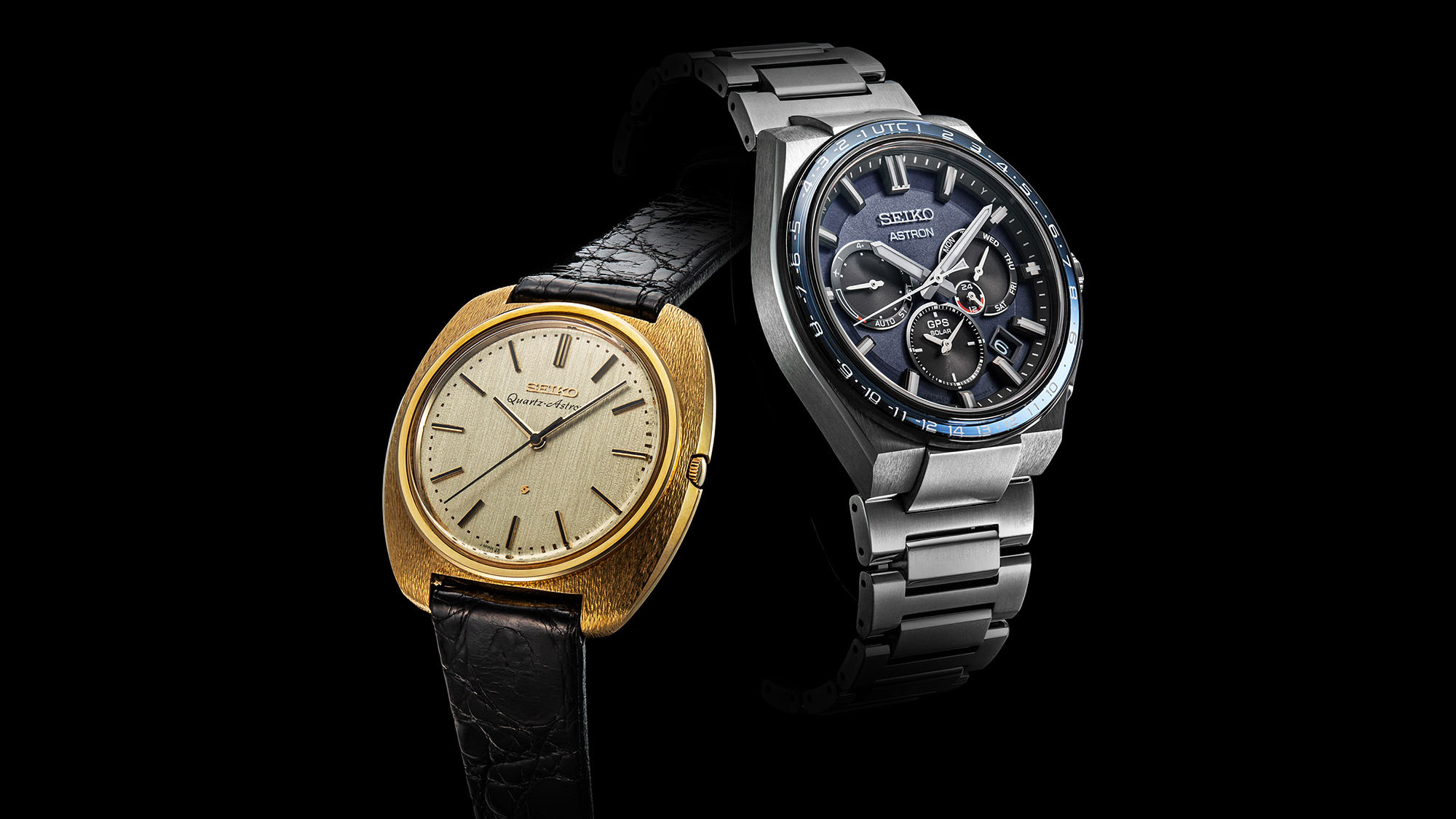
Photographs by Yu Mitamura
Text by Yuzo Takeishi
The Seiko Astron: The watch that made accurate time-keeping available to everyone.
The Seiko Astron is one of Seiko’s flagship brands and since its release in 2012 the watch has continued to garner support for its outstanding practicality. The watch was hailed on its release as marking “the second Astron revolution. ” An original classic stands behind all the watches that today bear the “Astron” name: the Quartz Astron 35SQ, released on December 25, 1969.
In the 1960s, Seiko was aiming to develop a watch that would be more accurate than conventional mechanical watches. The focus of their research was the quartz crystal unit. By using this in the heart of a watch, it was possible to achieve approximately 100 times more accuracy than with a conventional mechanical movement. But the crystal quartz clocks manufactured by Seiko for broadcasting companies at the time could be as big as a large locker. Certainly they were not something that could be comfortably worn on the wrist.
But Seiko saw that quartz-based watches would become the mainstream technology of the next generation and took the decision to launch a quartz wristwatch development project within Suwa Seikosha (now Seiko Epson). Seiko developed a marine chronometer for an observatory chronometer competition in Switzerland and in 1964 incorporated this technology into watches that were used for time-keeping at international sports events. The company also put a desktop quartz clock on the market. Following these developments, the company succeeded in completing the first quartz wristwatch anywhere in the world, which was released as the Quartz Astron 35SQ.
The release of the watch came roughly a decade after the project started in 1959. Miniaturizing a large crystal quartz clock for use in a wristwatch was a major challenge. The fact that Seiko achieved this mission with such aplomb was due in large measure to the way in which the company had remained loyal to the philosophy of the company’s founder, Kintaro Hattori whose motto “Always one step ahead of the rest” had established itself deep in the company’s culture.
1969: the release of the world’s first commercial quartz wristwatch
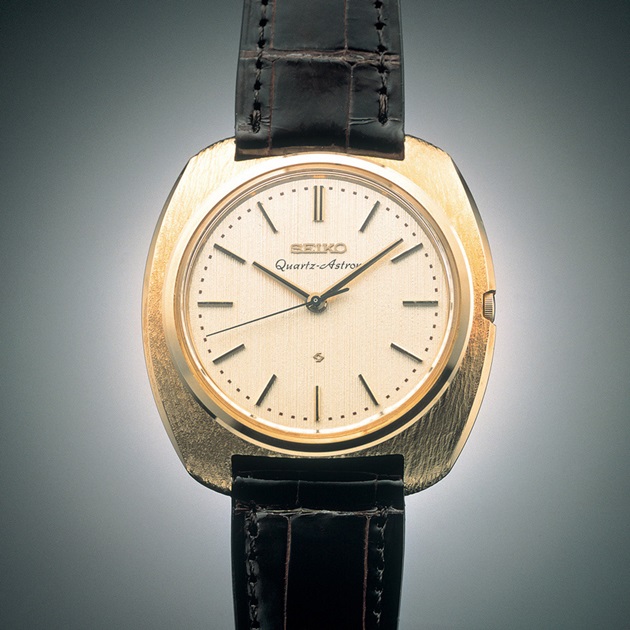
The world’s first mass-produced quartz watch, released on Christmas Day, 1969. Driven by an open-type step motor, the watch featured the individual step movements of the second hand, which ticked with every second in the motion that was to become characteristic of all the quartz watches that followed. The retail price at time of release was JPY450,000. Quartz (Cal. 35SQ). 18KYG case (Diameter 36mm, thickness 11mm).
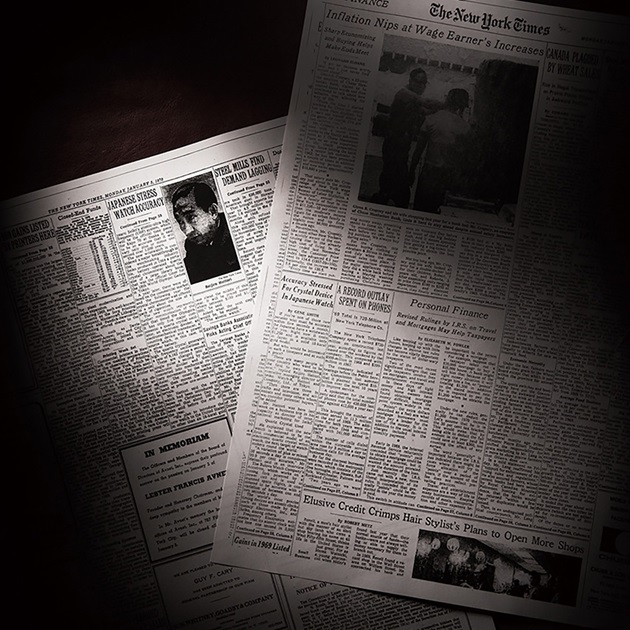
The new Quartz Astron was featured in the New York Times of January 5, 1970, under the headline: “Accuracy Stressed for Crystal Device in Japanese Watch.” In an interview with the newspaper, Reijiro Hattori, executive managing director of Seiko, said: “We plan to introduce the new watch to the United States.”
2012: The birth of the world’s first GPS Solar Watch

This was the world’s first GPS Solar watch, which could gather accurate location data and information on the local time at the current position from signals broadcast by satellites in orbit approximately 20,000 km above the earth. The watch was also powered by a battery that is charged by solar power. The first-generation 7X series went on sale in 2012. Since then, Seiko has continued to make further progress in miniaturization and has improved the GPS reception capabilities of the watches. GPS Solar (Cal.7X52). Ceramic x titanium (diameter 47mm, thickness 16.5mm.) 10 bar water resistance.
The quartz watch was a revolutionary watch that delivered convenient and extremely accurate timekeeping to everyone. But Seiko’s quest for accuracy did not end there. One major innovation in the 2000s, 30 years after the birth of the Quartz Astron, was the emergence of the radio clock, which corrected its time automatically by picking up standard radio waves broadcasting the official standard time. These clocks, which worked by using the standard waves based on atomic clocks, offered excellent accuracy. But there were only five countries in the world that had time signal stations broadcasting standard time radio waves. This meant that it was impossible to obtain the accurate time in places not reached by the radio waves. Seiko’s idea was to resolve this problem by catching the wave signals transmitted by GPS satellites.
Seiko Epson was responsible for producing the GPS signal antenna and circuits. Of course, it was essential to miniaturize these components before they could be incorporated inside a watch. And because it took 100 to 300 times more power to pick up GPS signals compared to standard time radio waves, improvements to power-saving capabilities were also essential. The new watch therefore had to clear the same kinds of difficult technical hurdles as the Quartz Astron. These challenges were eventually overcome and the Seiko Astron was released in 2012.
The first-generation 7X series had somewhat bulky proportions, with a diameter of 47mm, but the 8X series, released in 2014, managed to reduce this by approximately 30%. In the 5X Series, released in 2018, along with the downsizing of the caliber, the overall size was reduced to almost the same as that of a standard watch and the speed of the signal receiver was increased to reduce the time needed to pick up a GPS signal to as little as 3 seconds. The miniaturization process was taken even further by the 3X series in 2019, which reduced the case to the same compact size as a “regular” watch by further miniaturization of the antenna. With the release of this iteration, the impact of the “GPS Solar” elements of the watch were reduced to practically zero, both in terms of the appearance of the watch and its dimensions.
The GPS Seiko Astron truly deserves to be called Seiko’s second revolution. Following on from the original Quartz Astron, which made accurate time available for everyone, the GPS Astron made super-high accuracy part of daily life for everyone. The watch was a fitting addition to the historic lineup of watches that have worn the Astron name. Having overcome a series of difficult challenges on its road to completion, the watch certainly lives up to the company’s motto of remaining always “one step ahead of the rest.”
2018/2019 A new appearance, along with miniaturization and improved technical performance
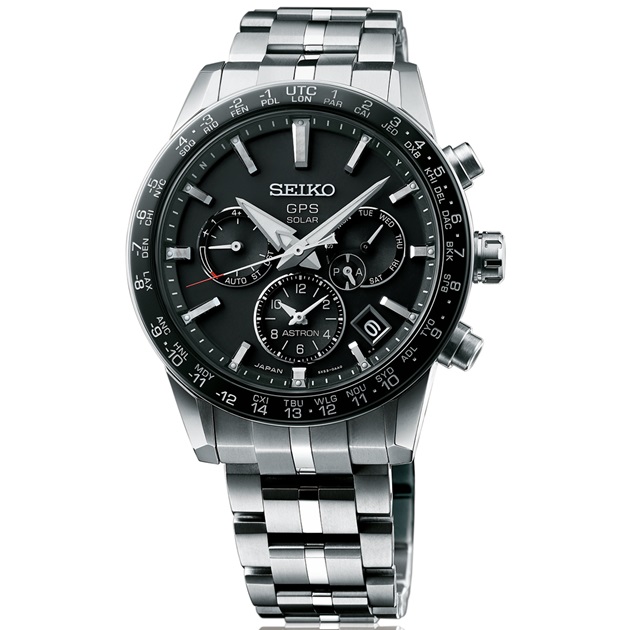
The third generation of the Seiko Astron GPS Solar not only achieved miniaturization by using the Cal. 5X53 movement. It also featured newly designed components which allowed data to be gathered from satellites in as little as three seconds. The watch’s user-friendly features also received an update including a super smart sensor that automatically connects GPS up to twice a day and the “time transfer“ function, which made it possible to switch instantly between two time zones. Ceramic/titanium (diameter 42.9mm, thickness 12.2mm). 10 bar water resistance.
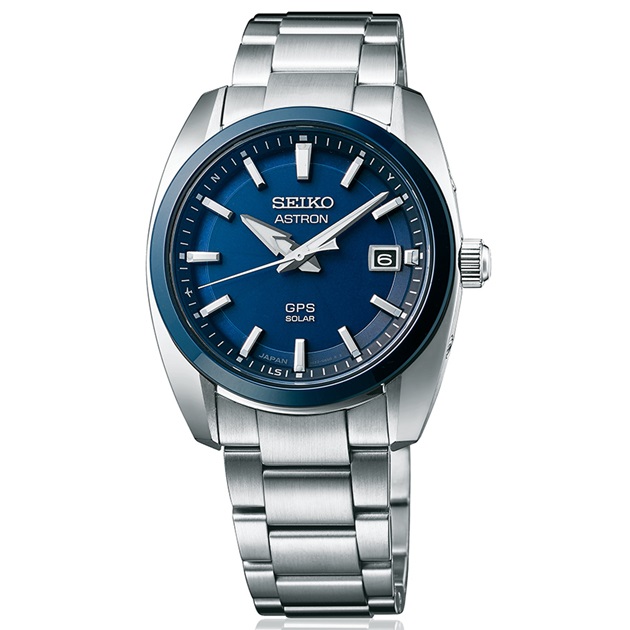
The current model of the Seiko Astron, introduced in 2021. By limiting the functions included in the watch and using the Cal. 3X22, Seiko succeeded in remarkable miniaturization and reduction of thickness. The case was reduced to just 39mm in diameter. At the same time, the watch represents remarkable advances in functionality. Power consumption is approximately 25% and the signal reception capability has been improved by 50% compared to the 7X series. The combination of the simple display face and ceramic bezel make the watch a perfect match for a wide range of settings. GPS Solar (Cal. 3X22). Ceramic/stainless steel. (Diameter 39mm, thickness 11mm). 10 bar water resistant.
A new design for Astron’s second decade.
2022 marked 10 years since the release of the Seiko Astron. To mark the occasion, a new range was added to the lineup: the new design series. Until then, the watches in the Seiko Astron lineup had generally been homages to the original Quartz Astron and had tended to be modern takes on the classic design. But to mark this landmark in the evolution of the series, Seiko decided that it was time for a revolutionary new design, introducing a new series that would embody the progressive spirit of the brand.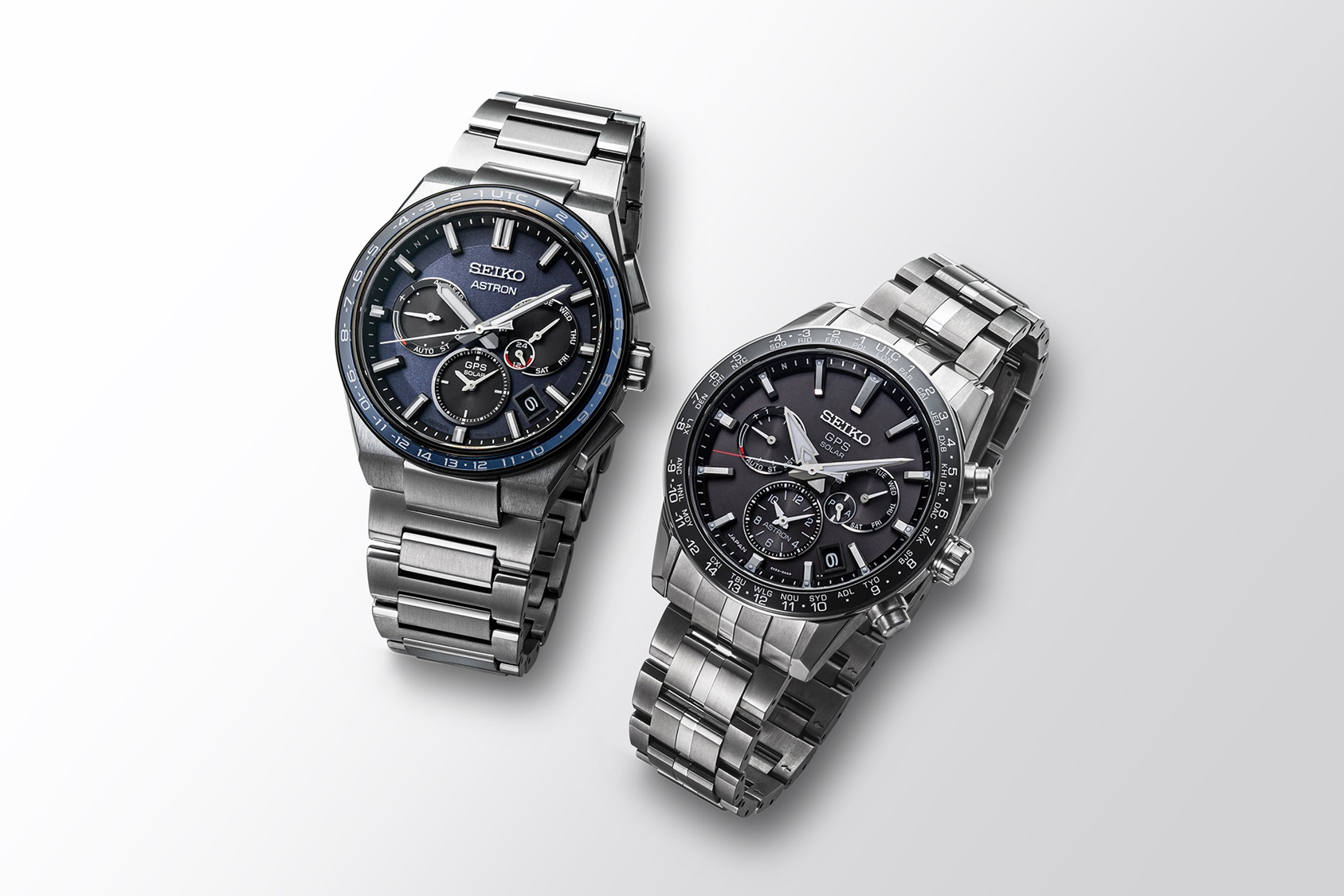
The meaning behind the new design series concept
The main target audience for the conventional Seiko Astron was international businesspeople traveling all over the world. But the dramatic change in lifestyles that has occurred over the past year or two prompted the company to reconsider its target audience. The company decided to focus on the “ next-generation leaders” who have become something of a buzzword in business circles in recent years and gave the watch a new design that aimed to meet the needs and demands of that audience.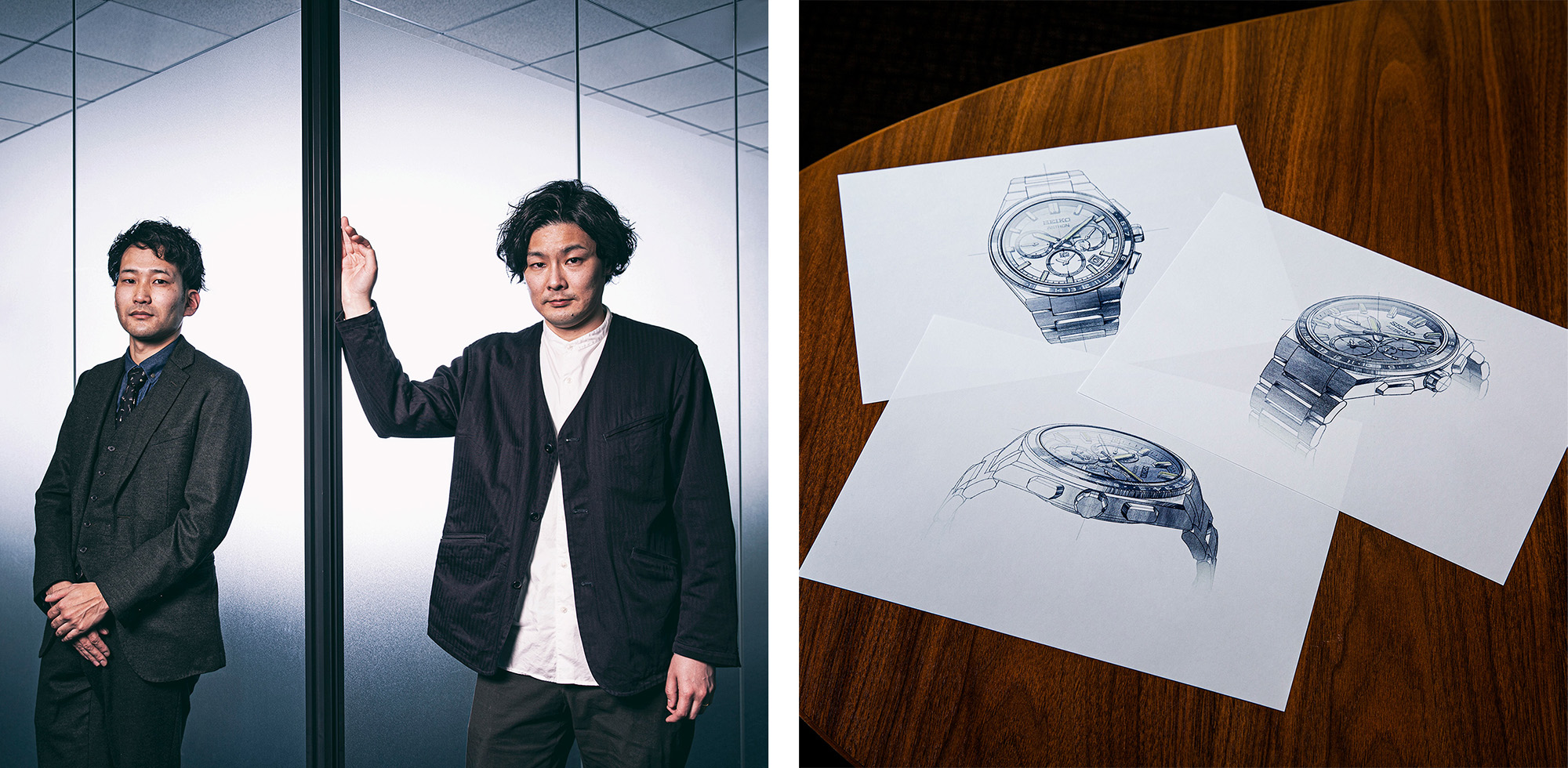
Shungo Higuma (left) who worked on product planning, and Kento Ito (right) of the design department. Based on design sketches drawn by Ito, the team used 3D printers and prototypes to gradually refine the design. In the prototype stage in particular, the team worked on many different color schemes, gradually narrowing down the colors that best matched the concept behind the design.
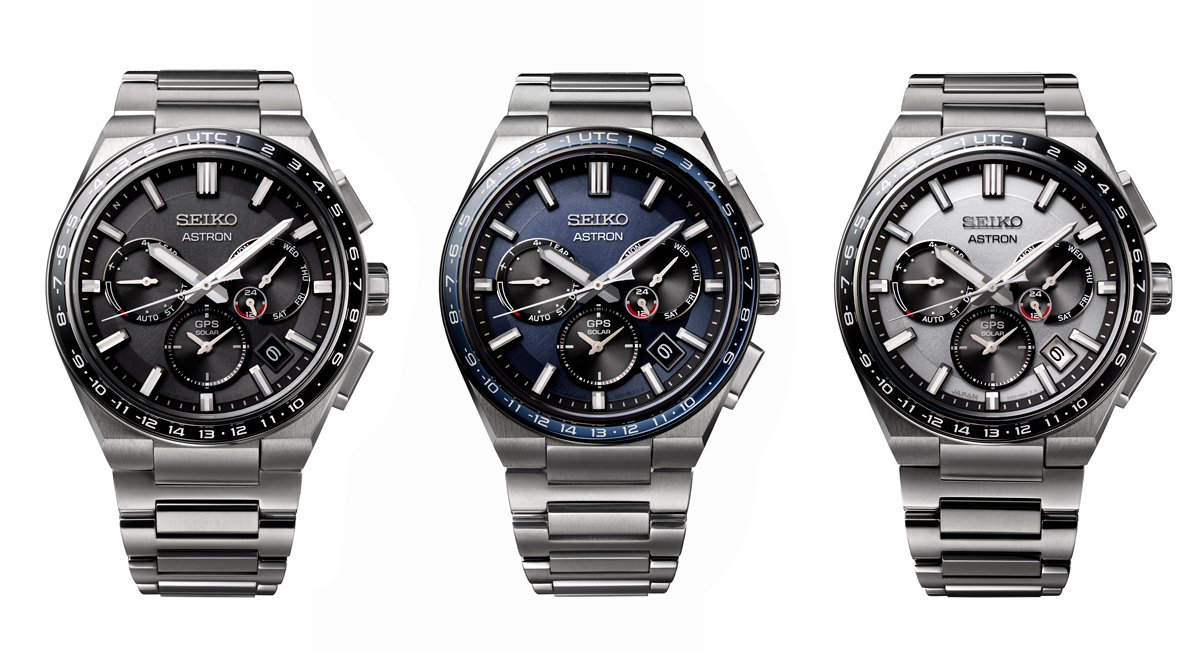
The latest generation of the Seiko Astron, due for release in May 2022. The design combines strength and power with a sleek modern design. GPS Solar (Cal. 5X53). Ceramics/Titanium (diameter 42.7mm, thickness width 12.2mm). 10 bar water resistance.
An update for the next generation
Although the new design series uses the same movement as the 5X Series released in 2018, a close comparison reveals numerous changes in the external elements of the two watches. The form of the case is particularly striking. Seiko made “solidity” and “harmony” the keywords for the worldview of the new design series. Even with its compact size, the watch still aims to express the same powerful impact of the 8X Series. A large number of prototypes were trialed before the team hit on the ideal design.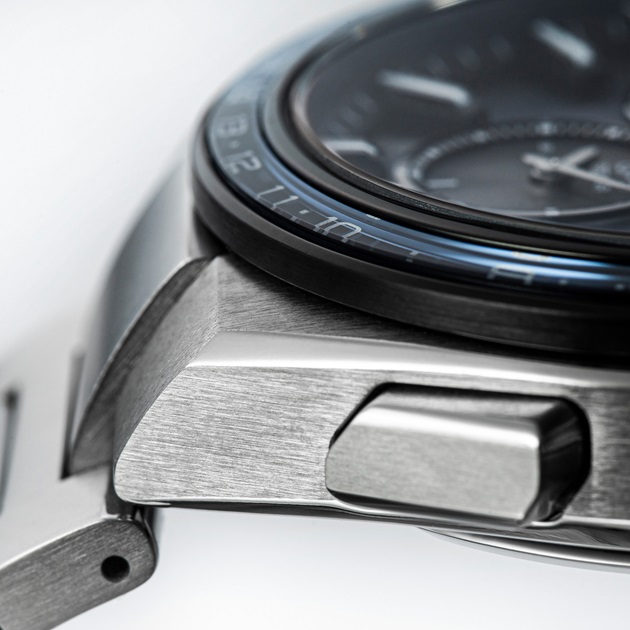
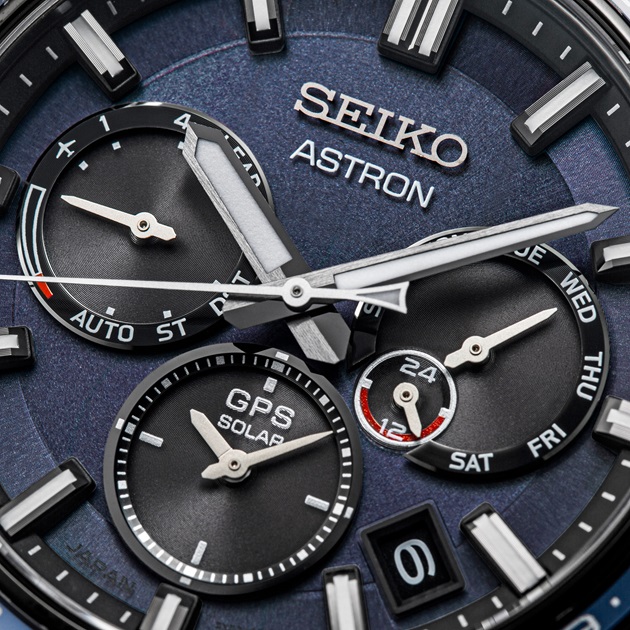
As Ito of the Design Department explains: “We ran through a repeated series of detailed checks. One challenge we faced was that the same finish that was effective in the 8X series didn’t bring out the same sense of strength in the new design. In fact, we found that we could get the impact we were looking for by paring back a lot of the elements we used in the 8X.” In the initial stages, there was some thought given to using a high proportion of hairline finish surfaces to enhance the solidity of the watch, but the team found that eliminating the polished surfaces robbed the watch of much of its glamor and visual appeal. The team opted to reduce the polished surfaces to emphasize a sense of solidity, and the case and bracelet were designed to look like a single unit to take better advantage of the wide surfaces of the lugs.
The result was the new design series which despite its close connections to the 5X Series represents a totally new expression of the series. The design of the watch lives up to its name, providing a renovated look for the series suitable for the next generation of the Seiko Astron.
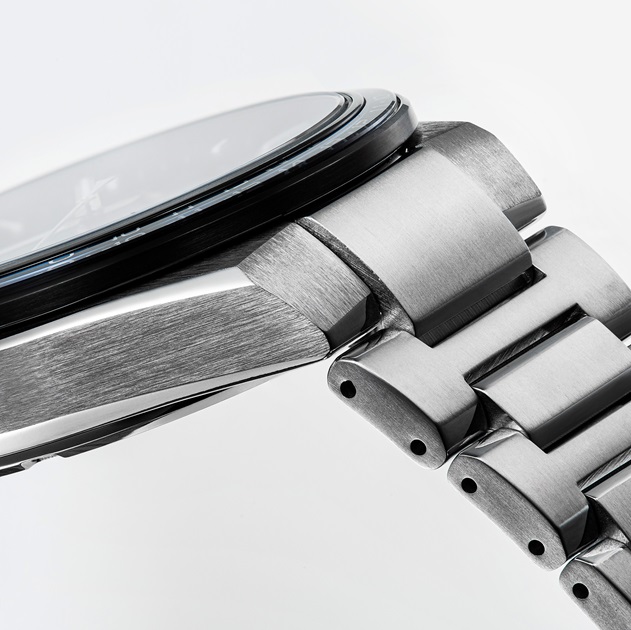
To make the best possible use of the large area of the lugs, the case and bracelet have a coherent structure. The bracelet is made with narrow-pitched H-shaped links for a more comfortable fit, and the oblique faces of the links are polished to create a solid look that is in harmony with the shape of the case.
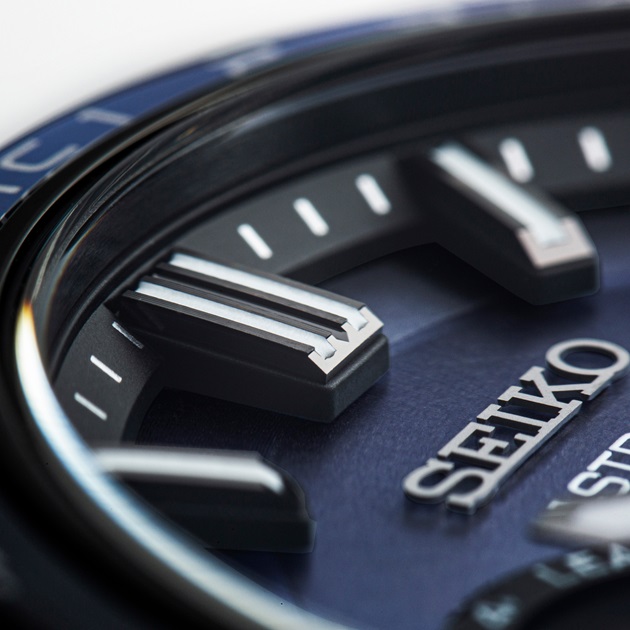
Astron forges a brighter future for those who wear it.
The new design series also incorporates a new touch that has not been seen in previous Seiko Astron watches: an eye-catching blue-gray dial.
“With previous models of the Seiko Astron, we chose a highly saturated full blue. But we are starting to see the beginnings of a trend toward more understated and grayish colors. We chose this color to create a version of the Seiko Astron that would convey an impression of elegance and sophistication suitable to the times,” says Shungo Higuma of the company’s Product Planning Department.
A repeated process of trial and error was required before the team arrived at the perfectly nuanced color. A simple blue gray by itself gave a blurred, unfocused impression to the watch face. To avoid this, the color scheme not only for the dial, but also for adjacent elements such as the subdials, indexes, and the sapphire ring around the circumference of the face, went through numerous adjustments until the final color was decided.
The new design series achieves an impressive harmony between the progressive spirit of the Seiko Astron and the trends of the times. It embodies a design that perfectly matches today’s lifestyles, marked by a seamless blending of work and leisure contexts, while the solar-charged battery aligns with the contemporary focus on sustainability and the SDGs. With the new design series, the Seiko Astron is forging ahead and opening a brighter, more prosperous future for those who wear it.
